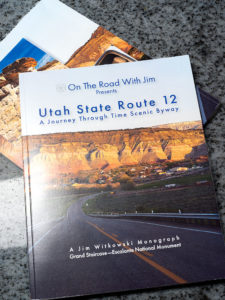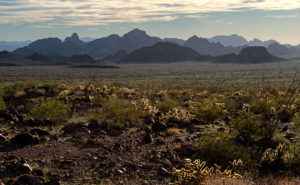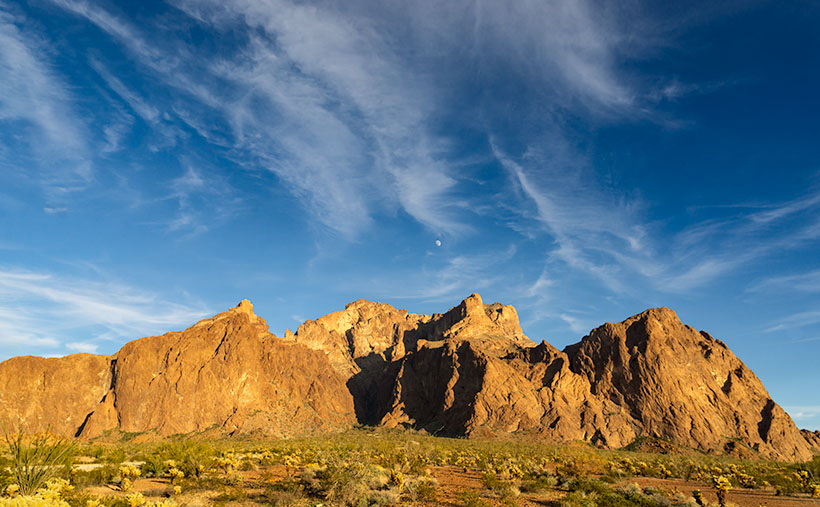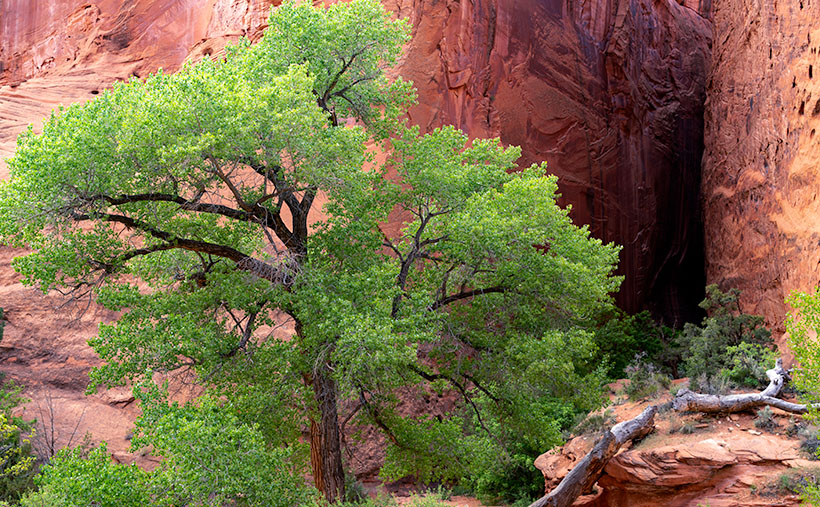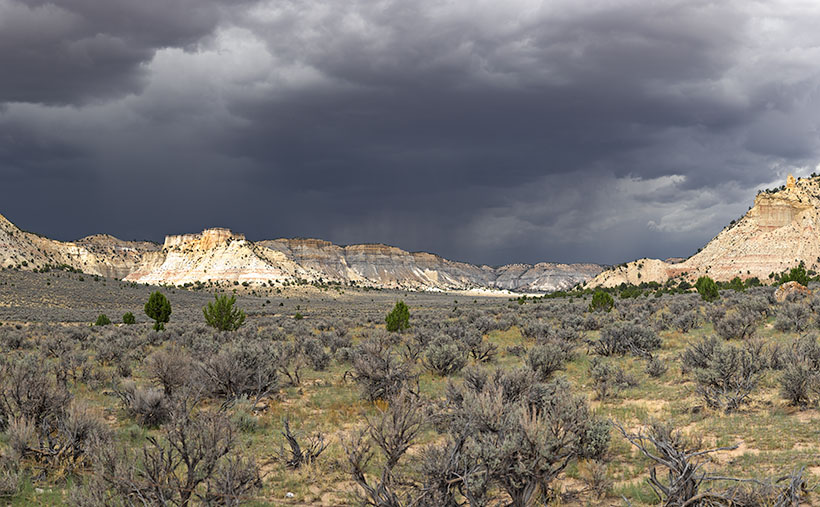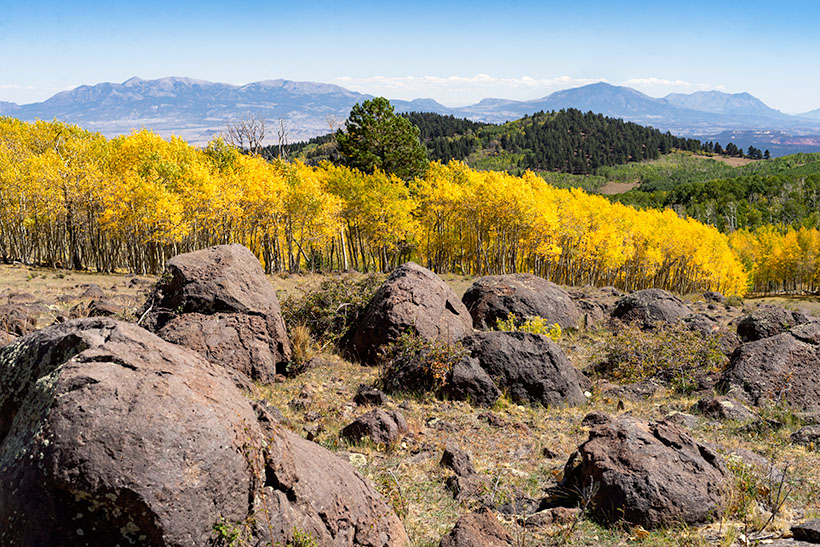You can tell a story in several ways. You can start with details and pull back to reveal the whole, you can take the long-shot and move in for the close-up, or you can jump back and forth. I find the third option hard to pull off well, so I avoid it. I see the skydiver method the easiest—jump out of the plane at 20 thousand feet and then move in closer for details. It’s self-limiting because I have to make my point before the ground interrupts my story.
When I visit a new place like this month’s topic—KofA Wildlife Refuge—it makes sense for me to take mountain pictures and then work closer, because a story isn’t complete without details. Interesting things are happening in the cracks. Literally, like in the case with this week’s featured image.
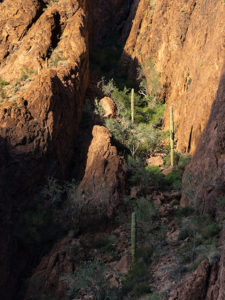
I photographed this scene along the Palm Canyon Trail. Unlike the palms, this side canyon was better suited for the lens I was carrying, so it was easier to compose. Instead of the palms that I was after, it’s just three common (to the Sonoran Desert) saguaros in a steep ravine. It’s the light of sundown that makes the image work. It emphasizes the canyon’s depth without being so harsh that it blacks out details.
I usually title my photos with descriptive titles, so I don’t have to be imaginative, but in this case, I didn’t. While I processed it—with the aid of my Medicare supplied drugs—I visualized the saguaros as mountain climbers trudging their way to a summit. I called it Saguaro Climbers. That’s crazy because we all know that saguaros can’t climb—don’t we?
As usual, you can see a larger version of Saguaro Climbers on its Web Page by clicking here. I hope you enjoy viewing this week’s post and next week when we’ll show another featured image from the KofA Wildlife Refuge.
Until next time — jw

